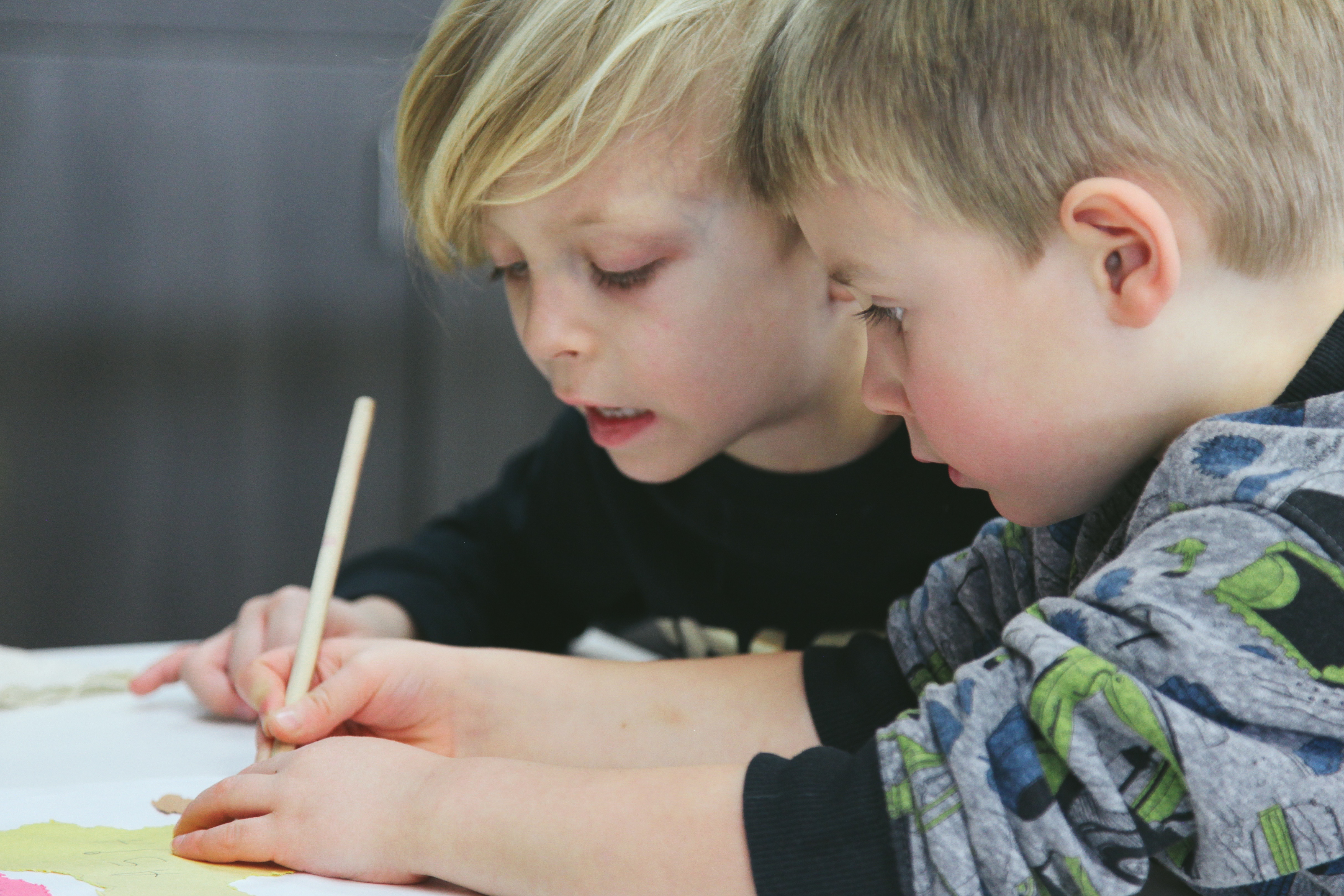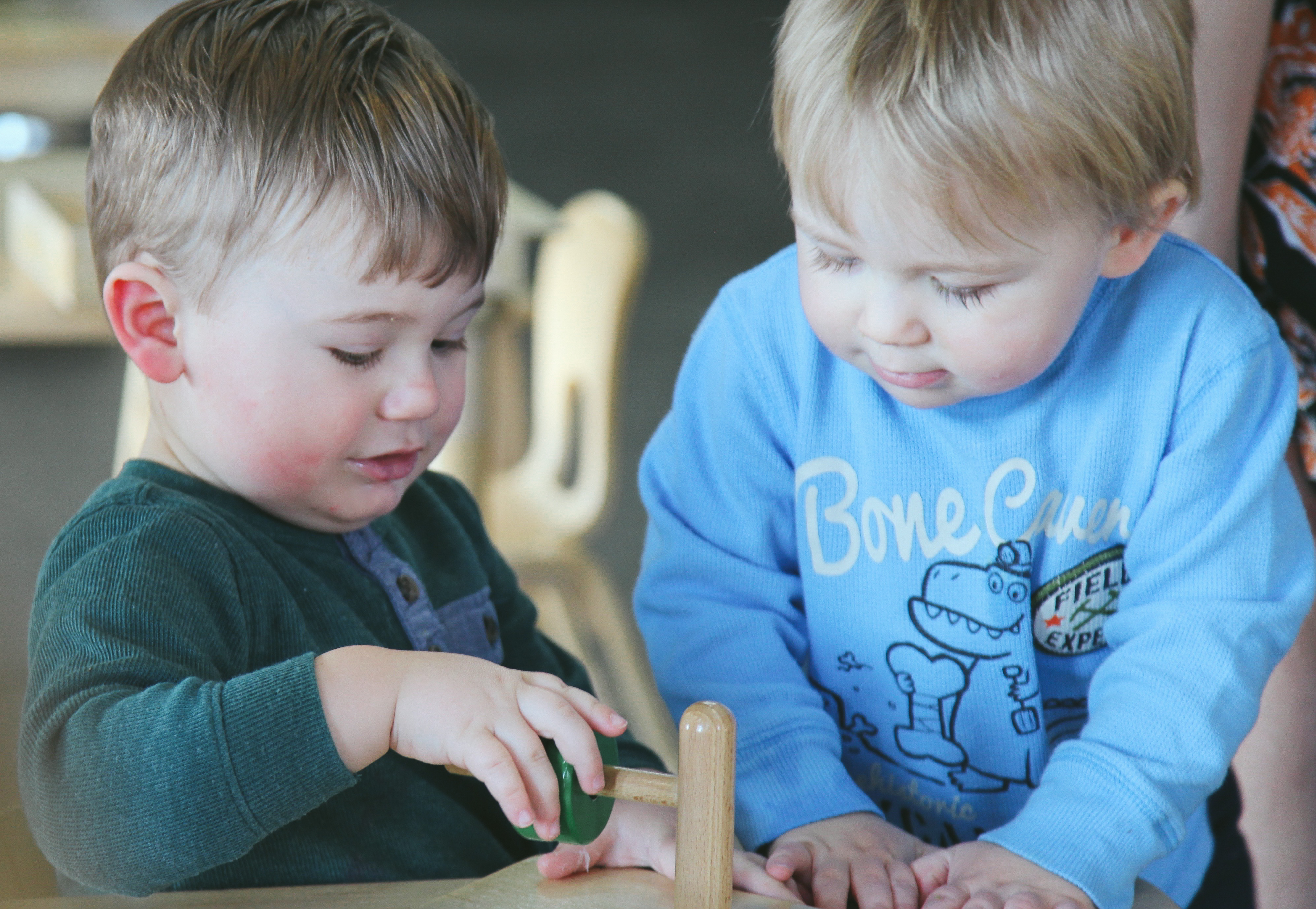
At some point, we all yearn for peers. We want to move beyond the cozy intimacy of family life and find our “something more.” The children at the playground are oh so appealing. We bounce and wiggle when we see a friend we recognize at the library. We’re hungry for interaction with other children, and while home and family will always be Base, we’re ready to venture out.
For some of us, this happens early, even before walking; others are contented at home until those school age years. This is true even for adults, some of us are happy at home with a book and a fish to talk to over morning coffee, others feel a bit “itchy” when we’ve been cooped up all day.
But nevertheless it comes: the desire for a wider social group.
A peer group is how we practice our skills. We practice social interactions, conversation, asking for and offering help, things we see modeled at home but being with friends is just different.

In Montessori, the peer group is vital. It’s a fundamental part of the Prepared Environment, a three-legged stool of a trained adult, a set of materials, and a group of similarly-aged peers. But it’s also valuable that these are similarly-aged, not same age, hence, the Mixed-Age Classroom iconic to Montessori.
In same-age groupings, it would be easy to think we’re all pretty capable of pretty much the same things. This is why traditional schools are run the way they are — we’re teaching to that middle 60%. Most children will grasp this concept in this much time, let’s say a week. 20% might understand it sooner, 20% might not have mastered it by the end of this time, but most children will move along at this pace.
“A peer group is how we practice our skills. We practice social interactions, conversation, asking for and offering help, things we see modeled at home but being with friends is just different.”
Every child is deserving of mastery, as is every skill. We’re always building, and if one brick, or an entire layer, is crumbling, or put together with mud rather than mortar, what comes later is unsteady at best.
In a group of children whose ages range from 2.5-6, or 6-9, or 12-15, it’s so obvious that there are widely different abilities, aptitudes, personalities, and challenges. We don’t fall into the trap of thinking everyone should be the same kind of capable; of course one can clean up a spill and one needs more help than they are able to contribute themselves, but that’s to be expected when you’re 3 & 5. We’re set up to meet individual needs because there is no 60% when everyone is on their own path.

Most children return year after year, most children know the rules and expectations and how to help one another. When one or two new children starts, or even a few more, they’re coming into a place that’s established, working together effectively, and able to offer help. Adults can devote a bit more time and attention to these new people, since everyone else knows the ropes. The group is your safety net, and they will always catch you.
It’s very much in line with the real world. We work with people of various ages with diverse backgrounds and experience. Help is not always top-down. Someone who just joined an organization benefits from more experienced peers, just as fresh ideas breathe life into a project. It’s symbiotic, having older and younger, more and less experienced, working side-by-side. You are not your age. We all learn from one another.
Yet, we can sometimes question the mixed-age classroom in Montessori. When our child is the youngest, we worry about the older ones bullying, pushing aside, dismissing. When our child is the oldest, we worry, will they feel held back because of those babies? Don’t they need a peer group.

Yes, and that’s just it. Other five-year-olds aren’t their peer group. The people they are with are their peer group. This group of 2.5-6 year olds are all their peers, whether they’re one of the few at the youngest edge, or the very oldest. There is no better or worse, no competition, no hierarchy, there’s just Friends. There’s no “holding back,” since you’ve always been working on exactly the right work for you. There’s no “you’re too little for this,” since that has no meaning when your progress is based on the intrinsic metric of mastery, rather than the arbitrary metric of age. There’s no “little kids,” since we’re all big enough to go to school, and there’s a constant flow of helping and needing help, mastery and challenge, conversation and quiet.
The oldest and the youngest children in the class might have fewer children who are just their age, but we’re the only ones who notice. The children only notice more friends, someone else to play with, or talk to, or ask if they need a hug. Their peer group is anyone they meet. What a life skill. What amazing citizens of the world.
Written by: